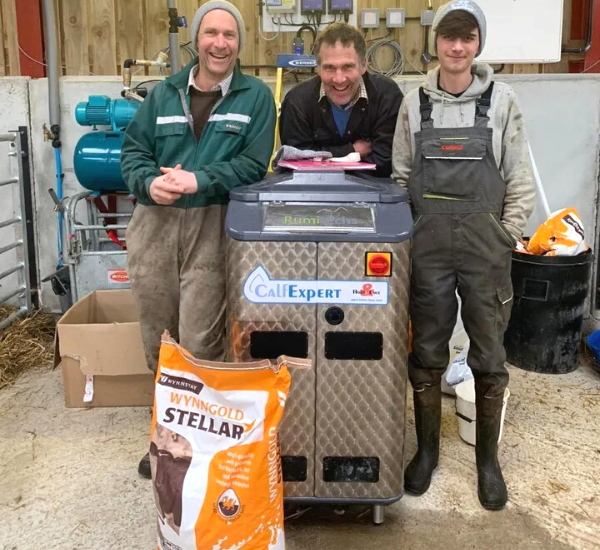As calf and youngstock specialists, we often discuss different rearing systems and technological advances that can help improve your current calf-rearing system.
We work closely with a network of engineers to ensure the machine is installed in the right position, with alternative feed programmes in order to benefit your rearing system. Millie Hendy spoke to Colin at Rumitechs to answer the most frequently asked questions about the H&L calf expert.
How many calves per station would you recommend?
Each station can feed up to 35 calves if Quadroflex is used. Without Quadroflex a maximum of 25. Pen size can vary, and many choose to have more stations and fewer calves per station to minimise disease pressures.
How often should I change the teats?
Teats will generally last the duration of a weaned group depending on group size. Some people prefer having a few teats on the go and changing daily while one is being disinfected.
What would you recommend to clean the machine?
The machine is best cleaned with the onboard wash system which uses Wynnstay’s whey calf milk and acid detergents (Alkali Kleen & Multi Acid Kleen from Wynnstay).
How do I check that calves are drinking?
All information about the calves can be found in the Calf, credit and alarm lists showing various data such as quantity consumed, quantity available, aborted visits and drinking speed. With these combined figures all on one page is often easy to notice a calf is sick before you can notice visually.
Do I need to use a specific powder?
A high-quality milk replacer that contains digestible ingredients will be most suitable for elevated feed plans. It is also essential that the powder can be mixed at 40˚C.
What water and electric supplies will I need?
For a stable and clean water supply, pressure is not critical but stability is important. Machines are available in either single-phase or three-phase and will require a 16-amp connection.
How far away can the stations be from the machine?
The maximum distance a station can be from the mixer is 7.5 meters to avoid cooling of the milk and resistance for the calf to suck.
What age range of calves can I put together?
Any age range of calves can be shared on a station from a drinking point of view because bullying is not possible due to the teat valve control. It is important to evaluate on a farm-by-farm basis, in ideal circumstances there will be a maximum age difference between 2/3 weeks. Consider pen sizes, air space and ventilation and disease status carefully.
Read more: 5 things you need to know about calf housing requirements
Will the calves perform better on a machine?
It gives them the ability for calves to drink little and often, therefore, they can digest more intake and we can increase the quantity and concentration to increase DLWG. The performance will depend on the quality of the milk replacer, hygiene, and the environment also.
Read more: Balancing calf milk replacer cost and performance
How do I train calves onto the feeder?
Training calves onto a machine is easily achieved; when a calf visits the station and is entitled to drink, the machine will mix a ration and pump the mix to the teat valve. If the calf is visiting for the first time a Smart key enables you to start the milk pump which trickles milk into the calf’s mouth, encouraging it to latch on.













